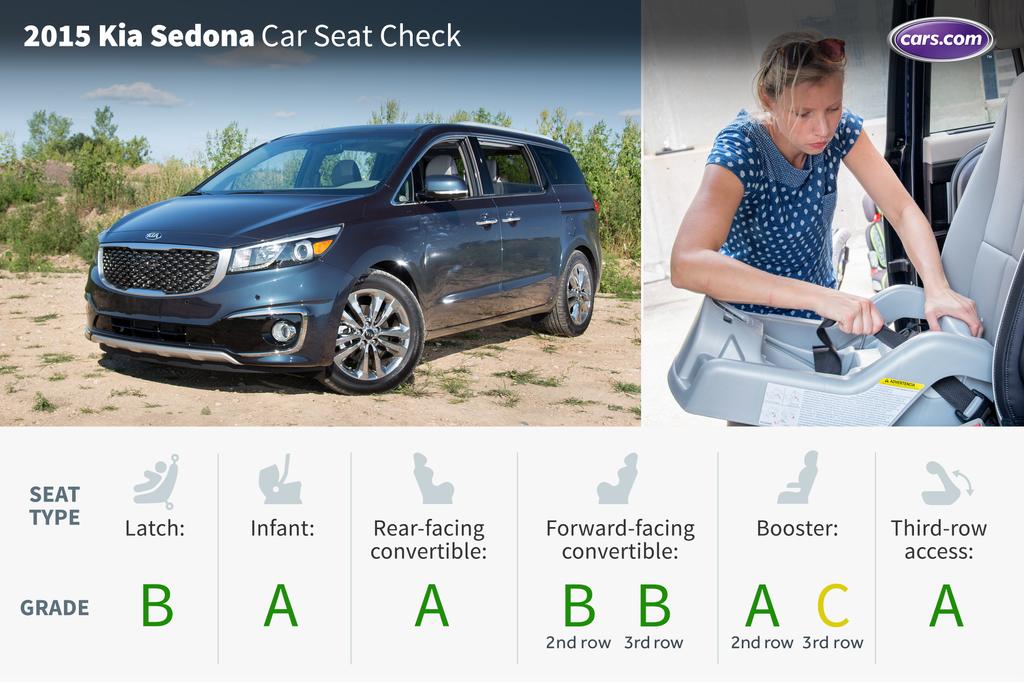
Kia's Sedona is new for 2015 with bold styling, and a comfortable, capable cabin. We tested a top-line SXL model equipped with second-row captain's chairs. Exposed lower Latch anchors and loads of room meant two child-safety seats went in easily in the second row, but the third row's seat belt buckles caused some trouble for our booster seat.
How many car seats fit in the second row? Two
How many car seats fit in the third row? Two
What We Like
- The second row's Latch anchors are exposed and easy to connect to. The third row's bench seat has one set of exposed Latch anchors on the passenger side and two tether anchors; they were all easy to use.
- We had no room or installation issues with the rear-facing infant-safety seat or the rear-facing convertible in the second row. The captain's chairs slide and recline for flexibility, and we didn't need to move the front passenger seat forward when installing either rear-facing car seat.
- In both the second and third rows, the forward-facing convertible installed easily after raising the head restraint.
- In the second row, the booster fit well, and the seat belt buckles are on stable bases, which should make it easier for kids to buckle up independently.
- Although step-in is relatively high, our test car's captain's chairs slide side-to-side, opening up a slightly larger pathway to the third row between the captain's chairs. The seats themselves also slide forward for third-row access.
What We Don't
- We downgraded the Latch system to a B because the top tether anchors in both rows are far down the seatback and not clearly marked. This could make them difficult for parents to find.
- We had issues installing the booster in the third row. The seat belt buckle is on a floppy base and sinks into a storage pocket when you try to push the buckle into the receptacle. It sunk so deep that we struggled to pull the buckle out of the pocket. You have to hold onto the buckle and angle it to the side before pushing the buckle into the receptacle.
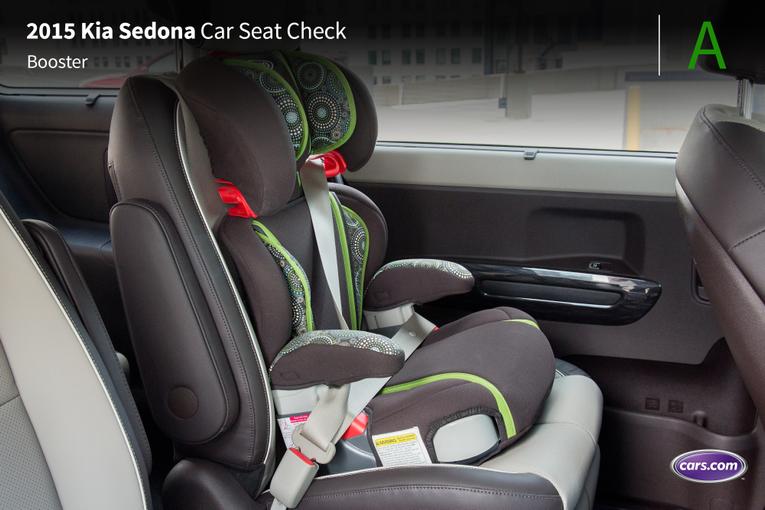
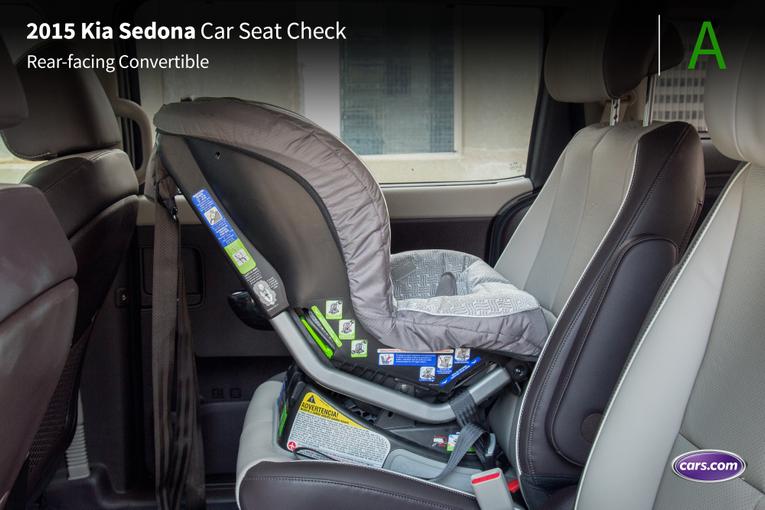

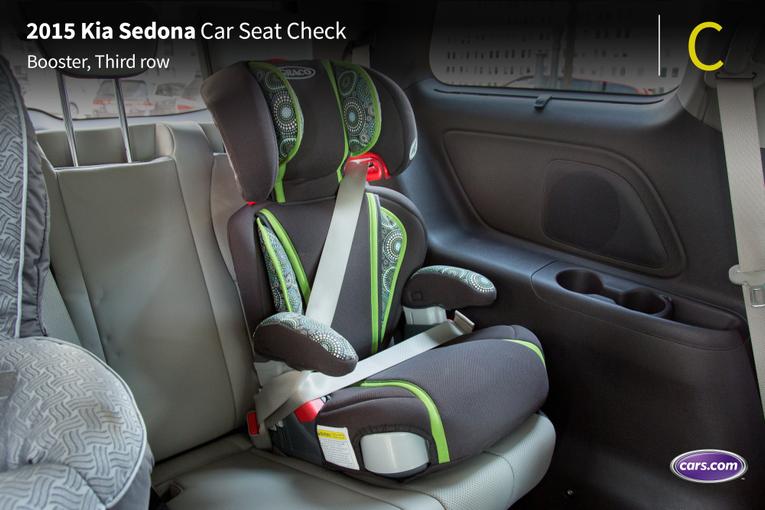
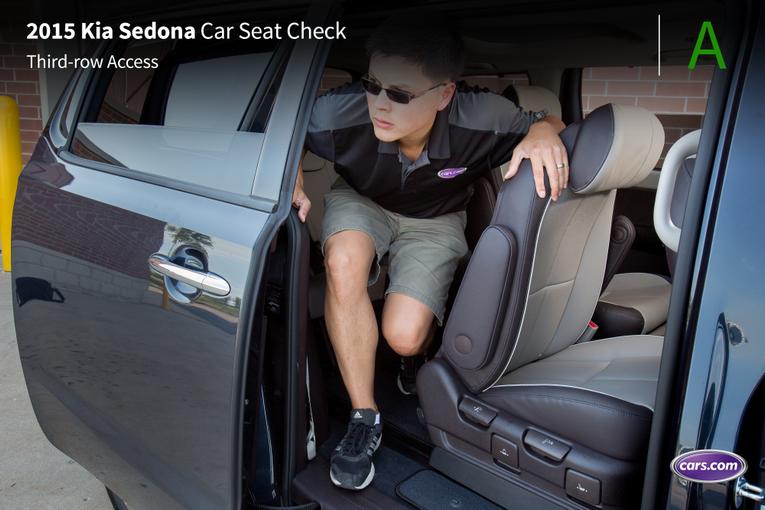
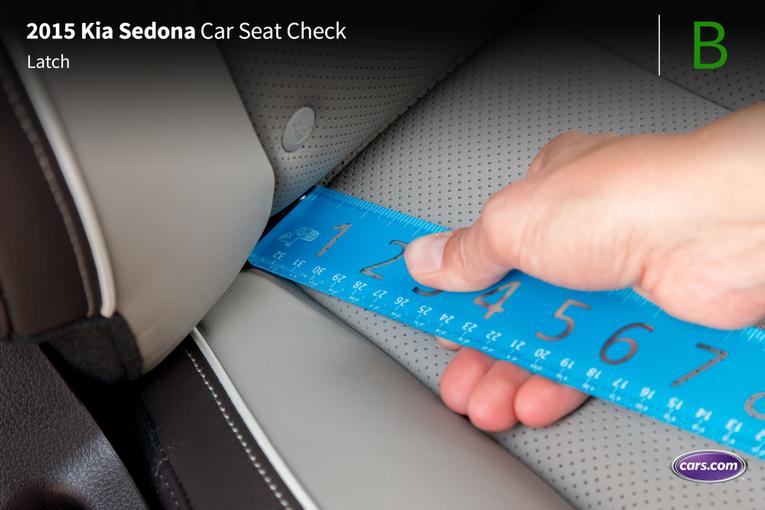
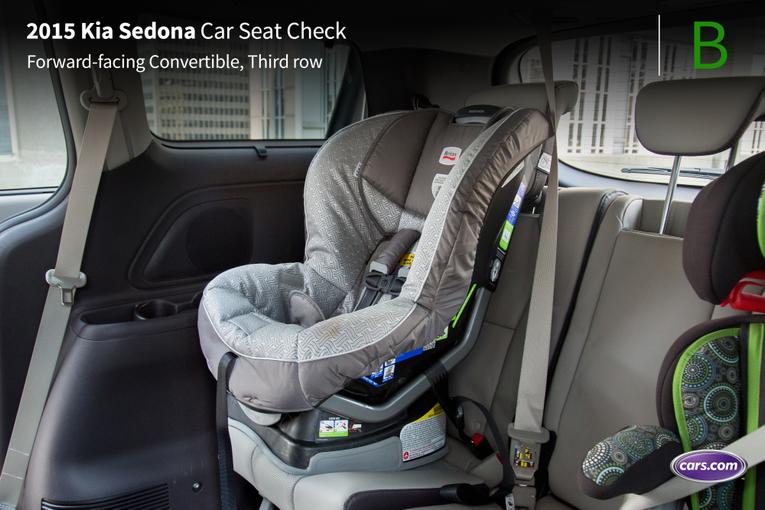
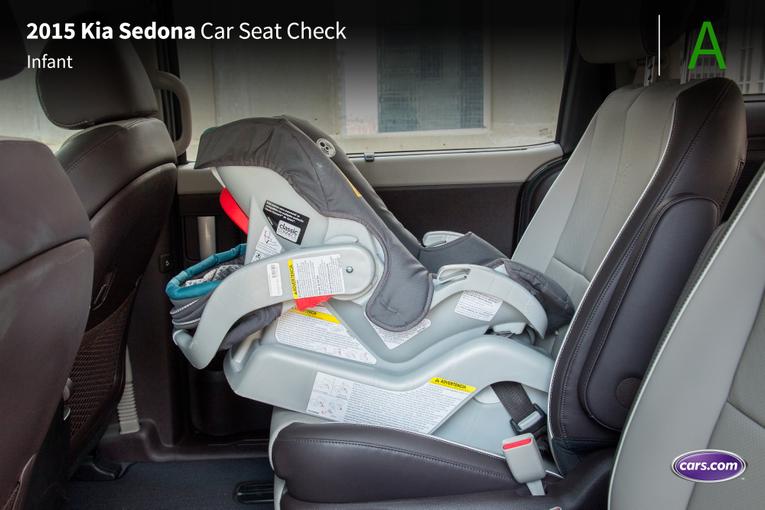
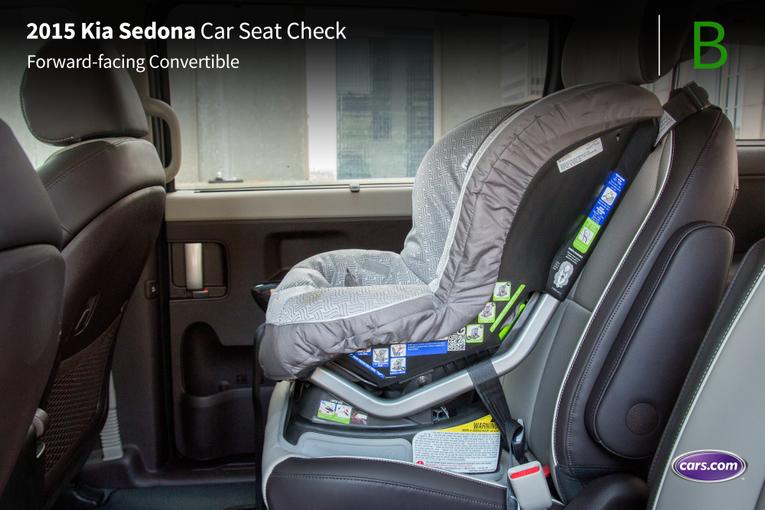
Grading Scale
A: Plenty of room for the car seat and the child; doesn't impact driver or front-passenger legroom. Easy to find and connect to Latch and tether anchors. No fit issues involving head restraint or seat contouring. Easy access to the third row.
B: Plenty of room. One fit or connection issue. Some problems accessing third row when available.
C: Marginal room. Two fit or connection issues. Difficult to access third row when available.
D: Insufficient room. Two or more fit or connection issues.
F: Does not fit or is unsafe.
About Cars.com's Car Seat Checks
Editors Jennifer Geiger and Jennifer Newman are certified child safety seat installation technicians.
For the Car Seat Check, we use a Graco SnugRide Classic Connect 30 infant-safety seat, a Britax Marathon convertible seat and Graco TurboBooster seat. The front seats are adjusted for a 6-foot driver and a 5-foot-6 passenger. The three child seats are installed in the second row. The booster seat sits behind the driver's seat, and the infant and convertible seats are installed behind the front passenger seat.
We also install the forward-facing convertible in the second row's middle seat with the booster and infant seat in the outboard seats to see if three car seats will fit; a child sitting in the booster seat must be able to reach the seat belt buckle. If there's a third row, we install the booster seat and a forward-facing convertible. To learn more about how we conduct our Car Seat Checks, go here.
Parents should also remember that they can use the Latch system or a seat belt to install a car seat, and that Latch anchors have a weight limit of 65 pounds, including the weight of the child and the weight of the seat itself.
No comments:
Post a Comment